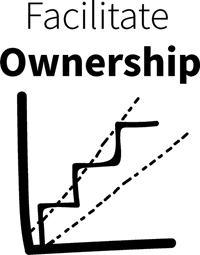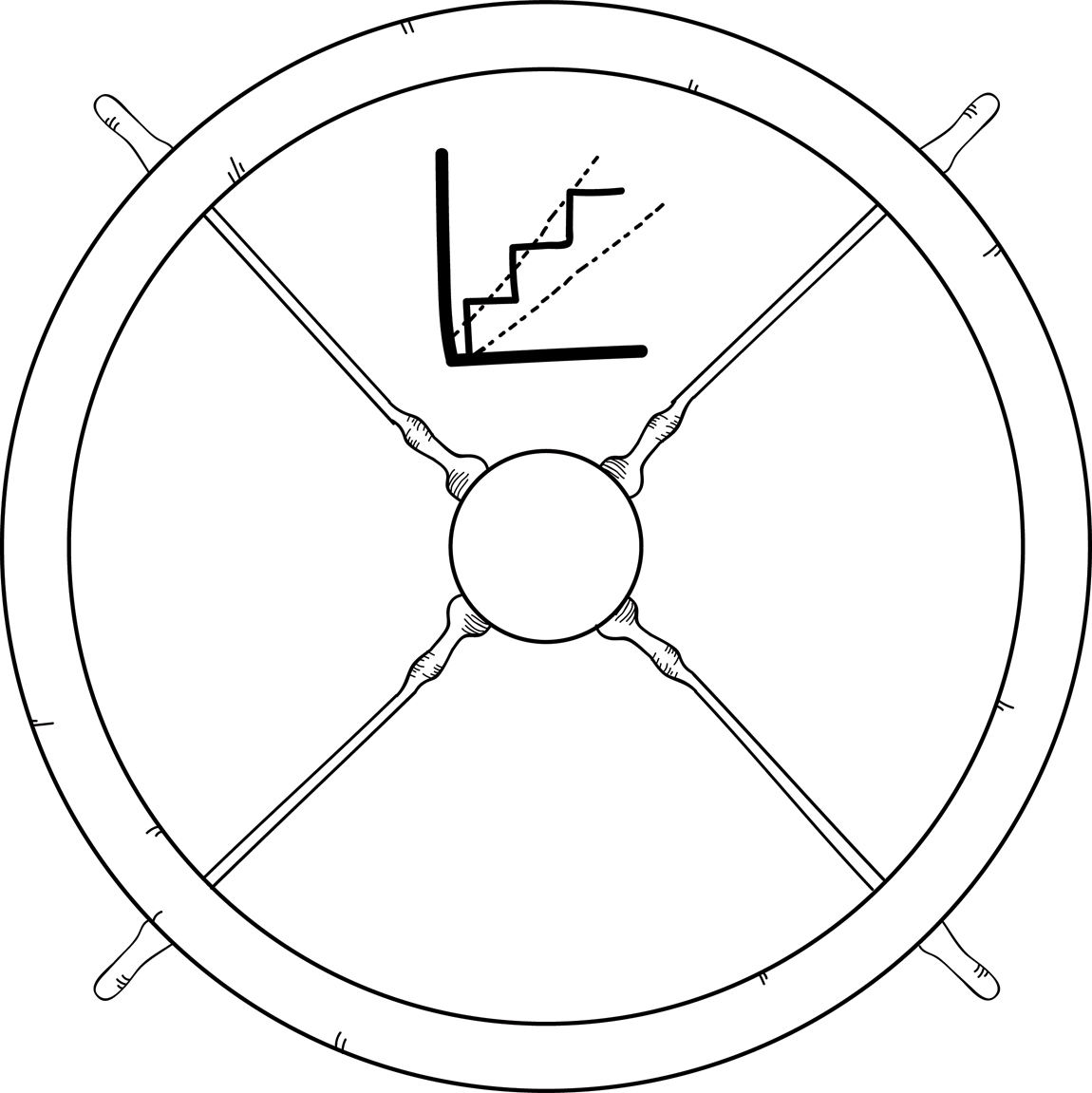2.4 How do Typical Teams Grow?
The courage of leadership is giving others the chance to succeed even though you bear the responsibility if they fail.

Introduction Questions
1. What do you prefer—to design the right environment for the teams, or to actively be part of a team?
2. Do you have the patience it takes to let a team grow?

Over the past years, I’ve seen multiple teams grow. I noticed that many teams go through almost the same stages of maturity. These stages are shown in Table 2.1.
Table 2.1 Stages of maturity
# |
Stage |
Description |
|---|---|---|
0 |
Start |
Collaboration emerges. |
1 |
Output |
The team gives reliable forecasts, manages their stakeholders, and often delivers what they promised. |
2 |
Quality |
The team increases their craftsmanship and mastery. They use this to deliver high quality. |
3 |
Scaling |
The team collaborates intensively with other teams and fosters synergy over multiple teams. |
4 |
Impact |
Multiple teams work smarter. They collaborate on creating a higher customer impact. They become the trusted advisors of their customers. |
Successful agile leaders adjust their own behavior to match the stage of maturity of their team. It is important that a leader recognizes how teams grow. The following, therefore, is an explanation of the different stages.
Stage 0, Start
In the start-up stage, the team focuses on building cooperation between members. They are busy getting to know each other and the environment and learning to work well together. The role of the agile leader in this stage is simply to manage. Teams grow faster in this stage when they have a leader who helps them arrange and coordinate things. The team needs clarity and transparency about work backlogs, team agreements, short-term objectives, work instructions, and holiday plans. If the agile leader takes care of this, the right environment for the team emerges to let the team negotiate their agreements, build trust, and gain experience. The team is usually not yet mature enough to manage its own priorities towards the stakeholders, so it helps if the agile leader creates clarity about who determines the priorities and what the overall priorities are. He can then coach the team to manage the expectations and satisfaction of stakeholders. At the same time, the agile leader coaches the team to become increasingly independent when they are planning activities and giving each other honest feedback.
Stage 1, Output
To reach the first stage of maturity, output, the team has shown that they can plan their own work, they are able to manage stakeholder expectations effectively, and they are able to meet those expectations with healthy reliability. To achieve this, team members know each other’s competencies, they have a realistic understanding of what they can reasonably accomplish, and they hold each other accountable on the agreements made. They also give feedback to each other regarding everyone’s contribution to the result, each other’s attitudes and behavior, and their mutual competencies. They also have a clear understanding of the impact they want to deliver to the customer.
With greater team independence, the agile leader is increasingly becoming the facilitator of the team at this stage. He makes fewer and fewer choices for the team, instead guiding them to make their own choices. He shares his experience and insight and stimulates the team to develop their knowledge and skills. In addition, the leader guides the clarification of the customer impact and the associated KVI (see Part 1). He is officially still managing them, but he encourages them to make their own decisions and gives them the freedom and permission to make mistakes and learn from the experience. This extends to giving them permission to question and challenge the opinions of the agile leader, to discuss matters as peers, to offer reasoned resistance, and to think and act critically.
Stage 2, Quality
To reach the second stage of maturity, the team has demonstrated that they are continuously improving the quality of their work. Team members have developed insight into their talents and craftsmanship, and they give each other feedback on the quality and maturity of their skills. They share knowledge or enroll in training and education to increase their skills. The agile leader has become mostly a facilitator; he hardly needs to say anything, he sometimes lacks the knowledge and experience that team members have to guide the team in growing their quality, and he becomes more detached from the daily work of the team.
Stage 3, Scaling
To reach the third stage of maturity, scaling, the team has demonstrated that they are able to cooperate, align, and build synergy with other teams. They mentor, coach, and guide other teams to grow their own maturity. At the same time, they are open to learning from and being coached by other teams. Together, the teams grow their craftsmanship, innovation, and quality. They work in a constructive atmosphere of fun, cooperation, honesty, and knowledge sharing between teams. The teams stimulate each other in the development of their talents and also hold other teams accountable on agreements and promises made.
The agile leader is now wholly focused on the collaborative environment. He inspires, motivates, and rewards teams when they collaborate. He removes impediments that block synergy and effectiveness. The agile leader is no longer needed for the daily work. He empowers the teams to learn faster from customers (see Part 3, “Learn Faster”) and increase the customer impact.
Stage 4, Impact
To reach the fourth stage of maturity, impact, several teams will have demonstrated that they are working well together and continuously improving. Their joint decisions are good, and they have implemented improvements and tested innovative ideas with customers. They show that they have such a level of craftsmanship that they say no to work that does not contribute (enough) to a higher customer impact. They receive quick feedback from customers on what they have done (see Part 3). This enables them to continuously work smarter. The agile leader now shifts completely, almost to the role of a servant. There is hardly any hierarchy anymore, and the leader actually only steers the culture (see Part 4, “Design Healthy Habits”). He inspires the team to continue to grow, to continue to challenge themselves, and to push boundaries.
After That?
After stage 4 comes teams that perform beyond market standards. Marketing, sales, support, and development teams work closely and mature together. In synergy, they achieve beyond market standards. They act as a small company within a larger company. These teams take ownership of the entire company as real entrepreneurs: from market proposition to price strategy and from sales to support.
